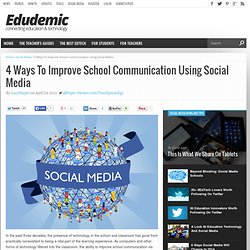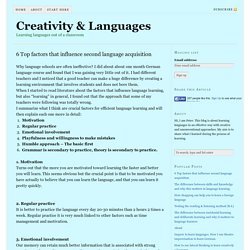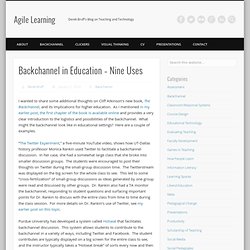

A new Moodle home page: “I am studying towards a degree, not a group of related courses” – E-learning team blog. At Sussex University we have taken steps to reconceptualise our learning space from the point of view of the students.

Students understand their educational journey to be one towards accreditation in a degree programme, but in the past our online space only reflected the compartmentalised courses (modules *) that made up their studies. As of March 2014 we created a new home page that included information about their overall degree. Why did we bother? The idea behind the project is to help consolidate student learning and provide a bridge between courses. Whilst success in each course represents a milestone in the students’ educational journey, this home page is intended to represent the bigger picture, in line with the way in which students think about their studies. Strategically the project has been designed to help improve results in the UK National Student Survey (NSS); a survey which has an influence on UK universities desirability to prospective students. What does it look like? 4 Ways To Improve School Communication Using Social Media.
In the past three decades, the presence of technology in the school and classroom has gone from practically nonexistent to being a vital part of the learning experience.

As computers and other forms of technology filtered into the classroom, the ability to improve school communication via computer also impacted the way school districts kept parents and staff members informed. The rapid growth of social media offers communication opportunities that are not found so easily by visiting a school district website. Many of these websites, though they’re well-intended, require the visitor to click through several screens to get to the information they desire. As technology progresses, people are less willing to go through this process when more efficient methods of communication exist. The use of social media to communicate with students and parents can help everyone stay up-to-date with what’s going on and what’s coming up.
Facebook Classroom Page Twitter for Reminders Blogging in The Classroom. The Irresistible Rise Of Google+ 6 Top factors that influence second language acquisition - Creativity & Languages. Why language schools are often ineffective?

I did about about one month German language course and found that I was gaining very little out of it. I had different teachers and I noticed that a good teacher can make a huge difference by creating a learning environment that involves students and does not bore them. When I started to read literature about the factors that influence language learning, but also “learning” in general, I found out that the approach that some of my teachers were following was totally wrong. I summarize what I think are crucial factors for efficient language learning and will then explain each one more in detail: MotivationRegular practiceEmotional involvementPlayfulness and willingness to make mistakesHumble approach – The basic firstGrammar is secondary to practice, theory is secondary to practice. 1.
Turns out that the more you are motivated toward learning the faster and better you will learn. 2. 3. 4. When we are bored we do not learn. 5. 6. Peter. How to use Social Media in Online Education - Beginners Guide. Delightful to many and inherent part of our lives for long, still unpleasant and somewhat ominous to some, social media has proven itself as nothing that will go away any time soon.

I intend to write this article as a beginners guide for individual educators and companies who just get started thinking of a strategy whether the use of social media might add value to what they do and in what ways this could be achieved following which of the different strategies. I often see a discrepancy between individual use of social media and its adoption when it comes to use it within companies. New Website Offers Fun Alternative for Practicing a Language - Learning the Language.
Teaching with Classroom Response Systems. I wanted to share some additional thoughts on Cliff Atkinson’s new book, The Backchannel, and its implications for higher education.

As I mentioned in my earlier post, the first chapter of the book is available online and provides a very clear introduction to the logistics and possibilities of the backchannel. What might the backchannel look like in educational settings? Here are a couple of examples. “The Twitter Experiment,” a five-minute YouTube video, shows how UT-Dallas history professor Monica Rankin used Twitter to facilitate a backchannel discussion. In her case, she had a somewhat large class that she broke into smaller discussion groups. Purdue University has developed a system called Hotseat that facilitates backchannel discussion.
(I’ve been meaning to talk about Hotseat here on the blog for a while now. What are some other ways that backchannel might function in educational settings? Notetaking: Students can take their notes during a class in the backchannel. Learn English, Spanish, French, German, Italian, Portuguese. Language Learning with Livemocha. Réseau social éducatif sécuritaire pour enseignants et élèves.